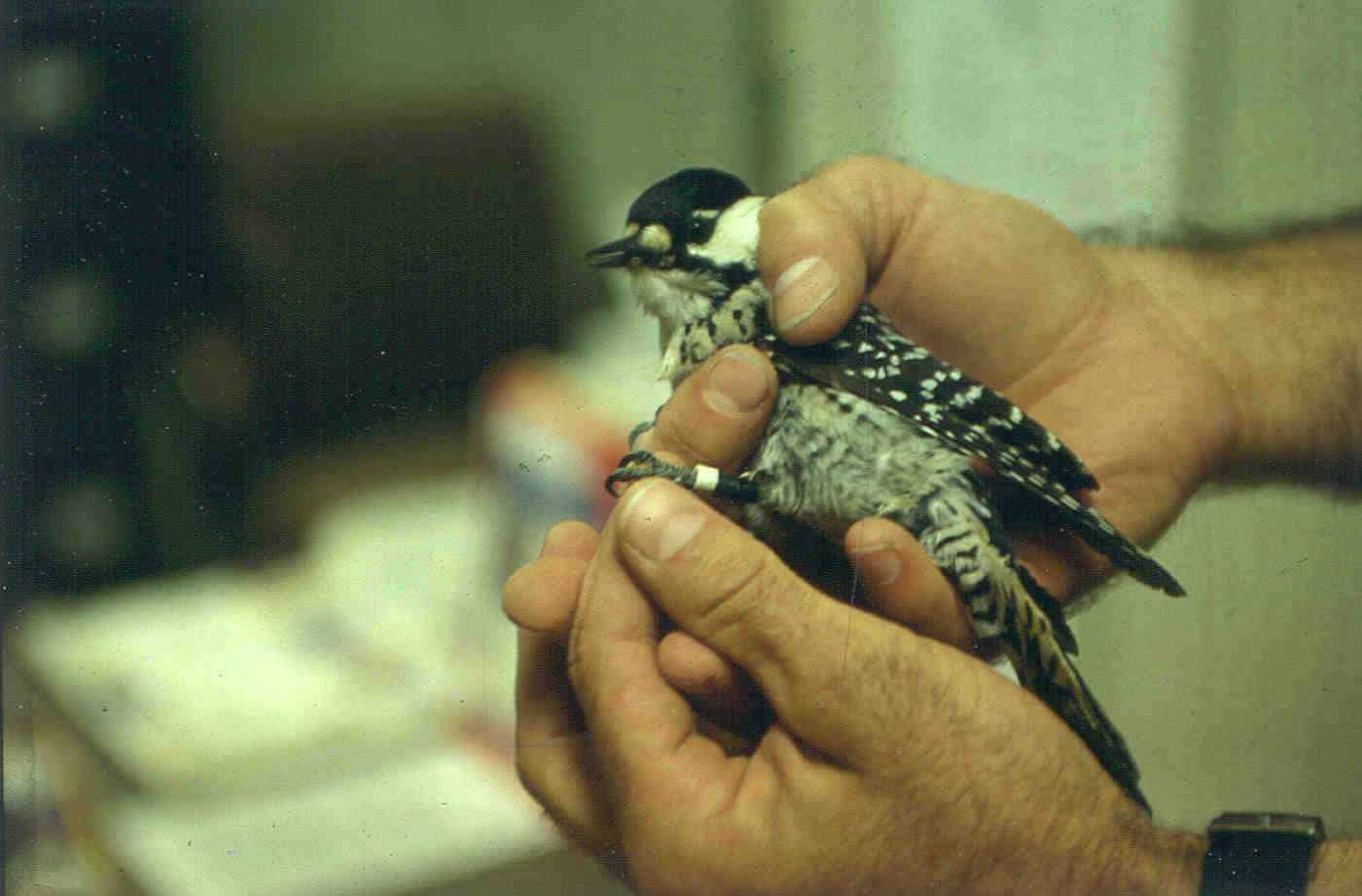
Species
Red-cockaded woodpecker (Picoides borealis)
Principal Biologist(s)
Greg Hagan, Mike Phillips
Project Location
Avalon, FL
Project Partners
US Fish & Wildlife Service
Florida Fish & Wildlife Conservation Commission
Conservation Problem
Populations have declined due to habitat destruction, degradation, and resulting fragmentation.
Conservation Status
- Listed as endangered under the ESA
Project Goals
The goal of this project is to restore 20 – 25 breeding groups to the Avalon property in northern Florida that can persist with minimal management. Once the population goal is achieved, TESF intends for Avalon to become a donor site for the species’ Southeastern Translocation Strategy.
Objectives
- Restoring abandoned clusters by providing ≥4 artificial cavities per abandoned cluster
- Establishing recruitment clusters by installing ≥4 artificial cavities per recruitment cluster
- Using fire to maintain RCW habitat suitability
- Pre-burn mowing (2 acres) around all clusters to protect cavity trees from prescribed fire
Project Background
The red-cockaded woodpecker (RCW) depends on habitat provided by mature pine forests — specifically those with longleaf pines averaging 80 to 120 years old and loblolly pines averaging 70 to 100 years old. Over the last century, RCWs have declined rapidly as their mature pine forest habitat has been altered, principally for timber harvest and agriculture. Pine savannahs and open woodlands once dominated the southeastern United States and may have encompassed over 200 million acres at the time of European colonization. Longleaf pine communities may have covered 60 to 92 million of those acres. Today, fewer than 3 million acres remain. RCWs once ranged from Florida to Maryland and New Jersey, as far west as Texas and Oklahoma, and inland to Missouri, Kentucky, and Tennessee. About 1% of their original range remains.
RCWs are a cooperatively breeding species, living in family groups consisting of a breeding pair, which may also include one or two male helpers (females can also become helpers but do so at a lower rate than males). The critical resource for RCWs is the availability of tree cavities, which the birds excavate in live pine trees, often taking several years to accomplish. A group of cavity trees occupied by a potential breeding group (an adult female and male, with or without helpers) is termed a cluster, and this is the metric of population size for RCWs.
In March 1998, TESF, in cooperation with the U.S. Fish & Wildlife Service, initiated an effort to reintroduce RCWs to Avalon in northern Florida. This effort was the first by a private landowner, state or federal agency to reintroduce a population of red-cockaded woodpeckers into an area where there was no extant population.
While the population expanded steadily during the first nine years of the project, during 2007-2009 there were signs that growth was slowing. An assessment of cluster status was undertaken in 2010, where it was determined the population comprised 13 active groups, 2 inactive groups, and 6 abandoned groups (i.e., showing no evidence of RCW activity for 3+ years). An aggressive approach was undertaken to restore the abandoned clusters, establish new recruitment clusters in priority habitat, and cavity tree management. These actions had a positive effect, with the population reaching 20 active groups, 4 inactive groups, and 1 abandoned group by the end of 2018, the highest number of active clusters on Avalon since project inception.
Project Activities in 2018
Cluster Status – Each cluster was monitored throughout the year, usually in January, March, June, and October. Monitoring checks are used to ensure each cluster has the minimum of 4 suitable cavities, and monitor for activity status (active or inactive), breeding status and demographics. In addition, more comprehensive surveys were completed in December examining evidence of new cavity trees or damage or loss to previously known cavity trees. A total of 25 RCW clusters where located on the property: 20 active, 4 inactive, and 1 abandoned cluster.
Supplemental Cavities – We lost three active cavity trees due to severe lightning and wind events. We therefore installed supplemental cavities in the three affected clusters to maintain a minimum of four cavities per cluster. All clusters/cavities were inspected following any significant weather event.
Cavity Tree management – Cavity tree management focuses on identifying and protecting all cavity trees (artificial and natural) from prescribed fire and minimizes any potential threat from other land management activities. All cavity trees (active, inactive and abandoned) are marked and mowed in advance of burning. A Timber Ax attached to a New Holland TV145 tractor was used for all mowing. This combination worked perfectly for minimal soil disturbance and zero soil compaction. There were enough fine fuels (pine needles, grass, etc.) remaining post mowing that the prescribed fire harmlessly burned under the cavity trees. This approach to fuel management allows the fire to maintain a contiguous burn throughout the area, while ensuring the protection of cavity trees.
Approximately 50 acres (2 acres/cluster) were mowed in mid-February in advance of the burn season. All cavity trees were marked (pink flagging) throughout the property prior to mowing and the burn season. No cavity tree mortality or scorch was detected in mowed clusters.
Prescribed Fire – Approximately 60 – 65% of the property was burned in March – April 2018. This is critical in maintaining the open fire forest the RCWs require and limit any hardwood encroachment.
